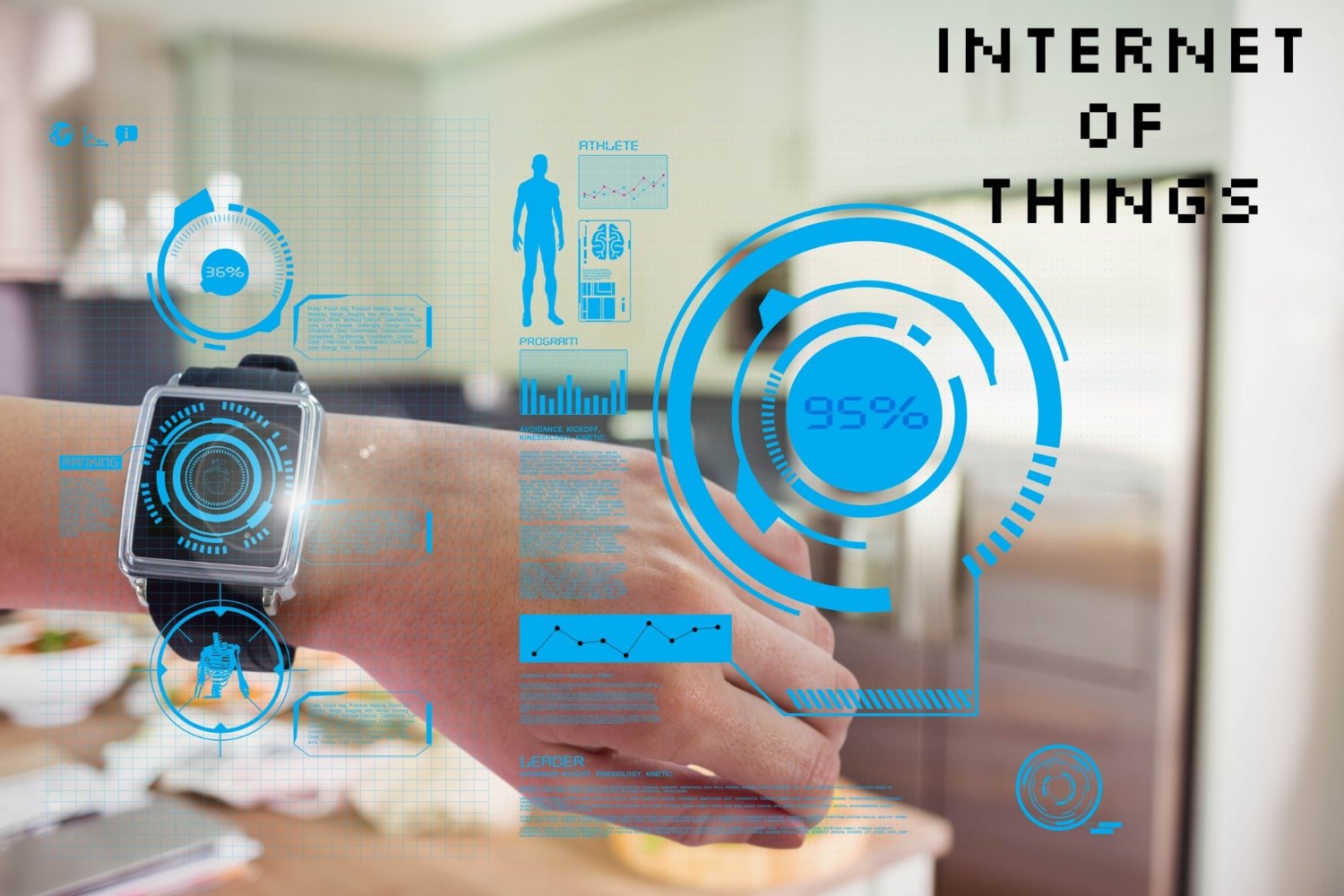How To Secure IoT Devices : A Comprehensive Guide to Defend Against Cyberattacks
Introduction
The exponential growth of IoT devices has revolutionized the way we live and interact with technology. From smart homes and wearable devices to industrial systems and healthcare equipment, IoT devices have become an integral part of our daily lives. However, this rapid expansion has also brought about an increased vulnerability to cyberattacks.
Understanding IoT Devices
IoT, or the Internet of Things, refers to the network of physical devices embedded with sensors, software, and connectivity that enables them to collect and exchange data. These devices range from simple household appliances like smart thermostats and voice assistants to complex industrial machinery and autonomous vehicles.
IoT devices have applications in many fields, including healthcare, transportation, agriculture, and manufacturing.. They enable remote monitoring, automation, and data-driven decision-making, leading to improved efficiencies and enhanced services. However, their interconnected nature also makes them susceptible to cybersecurity threats.
Importance of Securing IoT Devices
Cybercriminals target IoT devices for various reasons, including unauthorized access to sensitive data, conducting DDoS attacks, ransomware extortion, and even using compromised devices as gateways to infiltrate other systems. The vast amounts of valuable and personal information stored within these devices make them attractive targets for hackers.
Potential consequences of compromised IoT devices
The consequences of a successful IoT cyberattack can be severe. For individuals, it can lead to privacy breaches, financial losses, and even physical harm if critical systems like medical devices are compromised. In the case of organizations, attacks on IoT devices can result in substantial data breaches, operational disruptions, and reputational damage.

Identifying Vulnerabilities
1- Weak passwords and default settings
One common vulnerability lies in weak or default passwords and settings. Many users neglect to change default credentials, making it easier for hackers to gain unauthorized access. Strong, unique passwords, and the alteration of default settings are essential in mitigating this risk.
2- Lack of firmware updates and patches
IoT manufacturers regularly release firmware updates and security patches to address vulnerabilities. However, users often fail to install these updates, leaving their devices exposed to known security flaws. Regularly checking for and applying these updates is crucial for maintaining a secure IoT device environment.
3- Insufficient encryption protocols
Inadequate encryption protocols leave data transmitted between IoT devices and networks vulnerable to interception and decryption by attackers. Utilizing robust encryption algorithms and protocols is vital to safeguarding sensitive information and ensuring secure communication.
4- Inadequate network segmentation
Failing to segment IoT devices from other networked systems can lead to increased exposure to attacks. Separating IoT networks from critical infrastructure and implementing access controls can limit the potential impact of a compromised device and prevent lateral movement within the network.
Best Practices for Securing IoT Devices
1- Conducting a comprehensive risk assessment
Before implementing security measures, it is essential to conduct a thorough risk assessment to identify potential vulnerabilities and prioritize mitigation strategies. This assessment should consider the type of devices, their applications, and the potential impact of a cyberattack on the device, network, and user.
2- Implementing strong access controls and user authentication
Enforcing strong access controls and user authentication mechanisms adds an extra layer of security to IoT devices. Multi-factor authentication, biometric identification, and role-based access control help ensure that only authorized individuals can interact with the devices, reducing the risk of unauthorized access.
3- Ensuring regular firmware updates and security patches
Staying up-to-date with the latest firmware updates and security patches is critical for combating evolving threats. Regularly checking for updates and ensuring their timely installation keeps IoT devices protected from known vulnerabilities and exploits.
4- Utilizing encryption and secure communication protocols
Encrypting data transmitted between IoT devices and networks makes it harder for attackers to intercept or manipulate the information. Employing robust encryption algorithms, such as AES (Advanced Encryption Standard), and using secure communication protocols like TLS (Transport Layer Security) safeguards data integrity and confidentiality.

Network Security Measures
1- Securing Wi-Fi networks
Securing the Wi-Fi network is crucial as many IoT devices rely on wireless connectivity. Enabling strong encryption, changing default SSID and password, and disabling remote management are some basic steps to enhance Wi-Fi network security.
2- Implementing firewalls and intrusion detection systems
Deploying firewalls and intrusion detection systems (IDS) protects IoT devices from unauthorized access and network-based attacks. Firewalls filter incoming and outgoing traffic, while IDS monitors network activity and alerts administrators of potential threats.
3- Creating separate IoT networks
Segmenting IoT devices into dedicated networks provides isolation from other devices and systems. Creating VLANs (Virtual Local Area Networks) or deploying separate SSIDs for IoT devices can prevent attackers from pivoting to more critical network resources.
Physical Security Measures
1- Limiting physical access to devices
Physical security measures must be in place to prevent unauthorized physical access to IoT devices. These include securing devices in locked cabinets, restricting physical access to critical infrastructure, and implementing surveillance systems to deter unwanted tampering.
2- Changing default credentials and enforcing strong passwords
Changing default credentials and enforcing strong passwords mitigates the risk of unauthorized access to IoT devices. Users should customize default usernames and passwords and adopt complex, unique credentials to enhance security.
Incident Response and Recovery
1- Developing an incident response plan
Preparing an incident response plan helps organizations respond effectively to IoT device security incidents. This plan should outline the steps to be taken when a cyberattack is detected, including containment, eradication, recovery, and post-incident analysis.
2- Regularly backing up IoT device configurations and data
Regularly backing up the configurations and data of IoT devices is crucial for efficient recovery in the event of a cyberattack. Reliable backups enable organizations to restore devices to a known secure state and minimize downtime and data loss.

Privacy and Data Protection
1- Understanding data collected by IoT devices
IoT devices collect vast amounts of data, often including personal and sensitive information. Understanding the nature of data collected, how it is used, and where it is stored is crucial for ensuring compliance with privacy regulations and protecting user information.
2- Complying with data protection regulations
Organizations must adhere to data protection regulations, such as the General Data Protection Regulation (GDPR) and the California Consumer Privacy Act (CCPA). Implementing appropriate privacy policies, obtaining user consent, and securing data transmission and storage are essential aspects of compliance.
Educating Users and Raising Awareness
1- Promoting IoT security awareness
Increasing awareness about IoT security is vital for empowering users to take proactive measures. Educating users about the risks, best practices, and the importance of regular updates and strong passwords helps create a security-first mindset within the IoT community.
2- Educating users on potential risks and precautions
Users need to be informed about the potential risks associated with IoT devices and the precautions they can take to mitigate those risks. Providing user-friendly guides and conducting awareness campaigns can equip individuals with the knowledge needed to make informed decisions regarding their device security.
Conclusion
As the number of IoT devices continues to grow, establishing unified security frameworks becomes imperative. These frameworks should provide standardized security measures, encryption protocols, and device management practices to ensure consistent and robust security across diverse IoT applications.
Safeguarding IoT devices from cyberattacks is of utmost importance in today’s interconnected world. Implementing strong access controls, regular firmware updates, encryption protocols, and physical security measures are crucial steps in defending against threats. By understanding the risks and following best practices, both individuals and organizations can contribute to the overall security of the IoT ecosystem.

